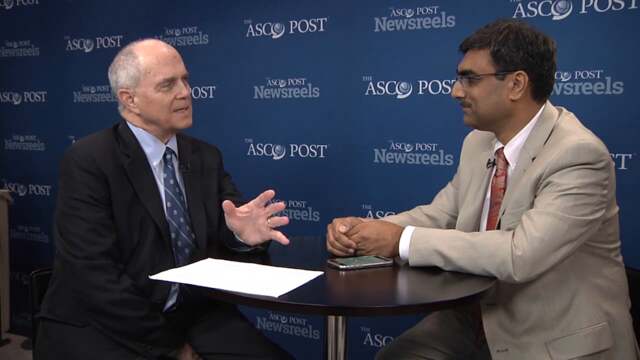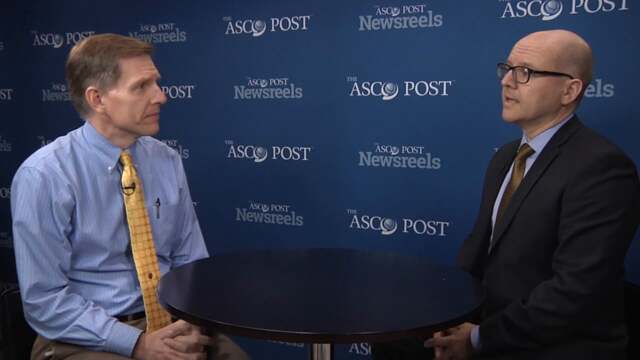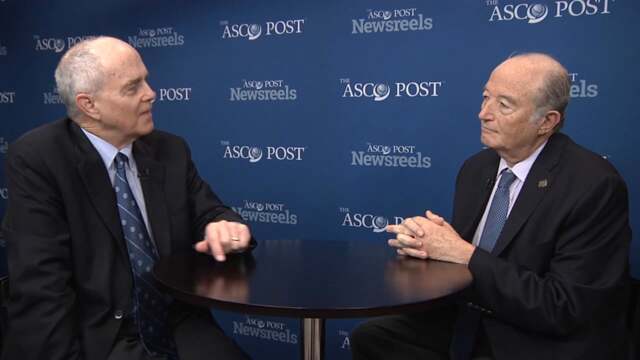Charles F. von Gunten, MD, PhD, Discusses Anamorelin and Olanzapine for Palliative Care
2015 ASCO Annual Meeting
Charles F. von Gunten, MD, PhD, of OhioHealth Kobacker House discusses the ROMANA 1 and 2 trials on cachexia in NSCLC and a study on olanzapine vs fosaprepitant for the prevention of nausea and vomiting (Abstracts 9500 and 9502).
Asher Alban Chanan-Khan, MD, and James O. Armitage, MD
James O. Armitage, MD, of the University of Nebraska Medical Center, and Asher Alban Akmal Chanan-Khan, MD, of the Mayo Clinic Cancer Center, discuss an important treatment option that significantly improved overall response rate and reduced risk of progression or death by 80% (Abstract LBA7005).
Jedd Wolchok, MD, PhD
Jedd Wolchok, MD, PhD, of Memorial Sloan Kettering Cancer Center discusses therapies for treatment-naive patients with advanced melanoma (Abstract LBA1).
Andrew James Martin, PhD, and Anthony J. Olszanski, RPh, MD
Andrew James Martin, PhD, of NHMRC Clinical Trials Centre, University of Sydney, and Anthony J. Olszanski, RPh, MD, of Fox Chase Cancer Center, discuss a form of vitamin B3 that reduced the incidence of new nonmelanoma skin cancers in high-risk patients (Abstract 9000).
Eduardo Cazap, MD, PhD and James O. Armitage, MD
Eduardo Cazap, MD, PhD, of the Latin American & Caribbean Society of Medical Oncology, and James O. Armitage, MD, of the University of Nebraska Medical Center, discuss oncology from an international point of view.
Daniel A. Vorobiof, MD, and Bernardo Leon Rapoport, MD
Daniel A. Vorobiof, MD, of the Sandton Oncology Centre, and Bernardo Leon Rapoport, MD, of The Medical Oncology Centre of Rosebank, discuss the first study to evaluate the efficacy and safety of a single dose of intravenous fosaprepitant. The use of this NK1 inhibitor and another (rolapitant) in a second study discussed may change the management of chemotherapy-induced nausea and vomiting and improve quality of life for patients (Abstracts 9629 and 9615).





